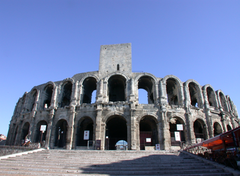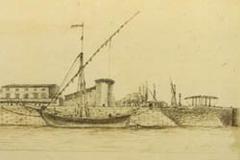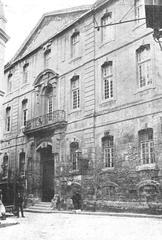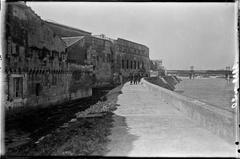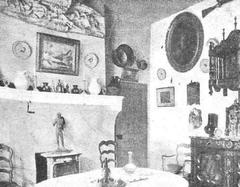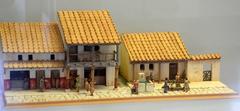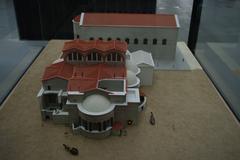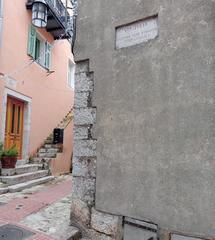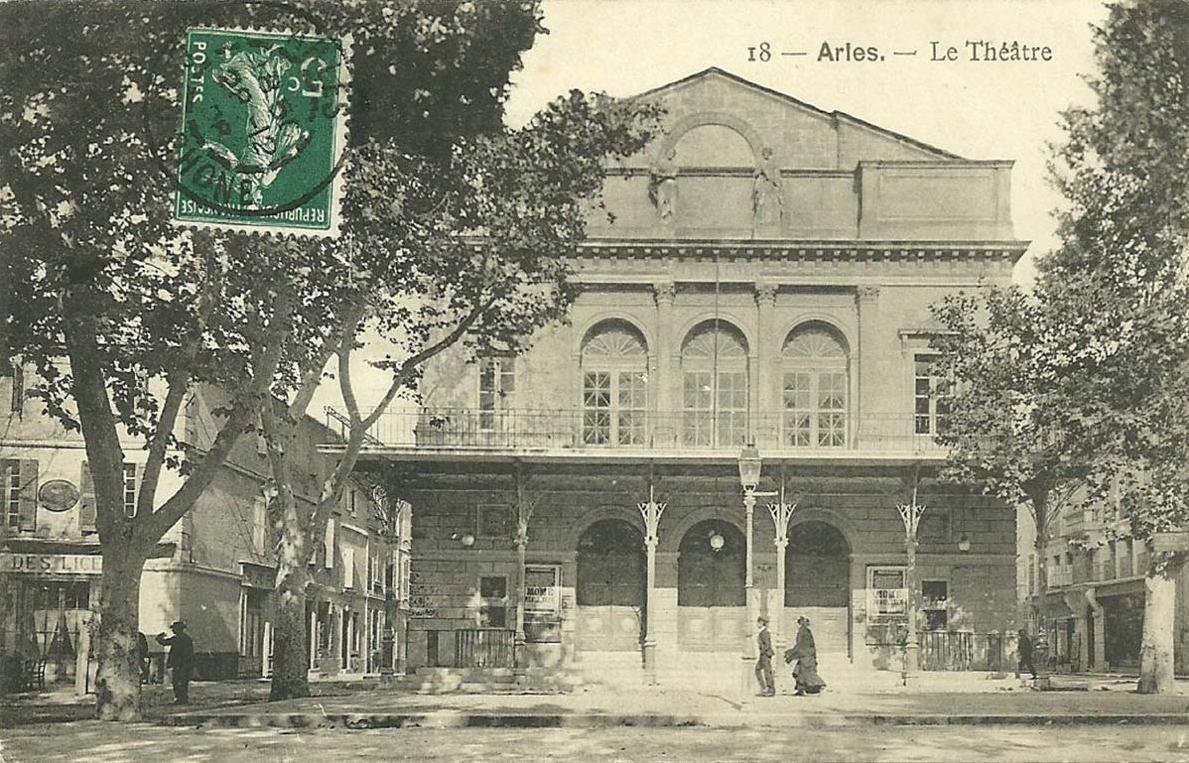
Théâtre Antique d’Arles: Visiting Hours, Tickets, and Historical Guide in Arles, France
Date: 14/06/2025
Introduction
Nestled in the heart of Provence, the Théâtre Antique d’Arles stands as one of the most iconic and well-preserved Roman monuments in France. Built in the late 1st century BCE under Emperor Augustus, this ancient theatre not only serves as a striking reminder of Arles’ Roman past but remains a thriving venue for cultural events today. Its monumental structure, historical layers, and ongoing role in the city’s vibrant life make it a must-see for history enthusiasts, architecture lovers, and travelers alike. This comprehensive guide provides detailed historical context, practical visiting information, accessibility tips, and recommendations for exploring nearby attractions, ensuring you make the most of your visit to this UNESCO World Heritage Site (UNESCO, Arles Tourisme, Nomads Travel Guide, France Adventurer).
Table of Contents
- Introduction
- Historical Overview
- Visiting Information
- What to See and Do
- Practical Tips for Visitors
- Visitor Conduct and Preservation
- Frequently Asked Questions (FAQ)
- Visual and Interactive Resources
- Summary and Call to Action
- References
Historical Overview
Roman Foundations and Construction
The Théâtre Antique d’Arles was constructed in the late 1st century BCE when Arles, then known as Arelate, became a Roman colony. Strategically located on the Rhône River, the city rose quickly as a commercial and military center. The theatre, dedicated to Apollo and Emperor Augustus, was among the earliest stone theatres in Roman Gaul, designed to showcase the cultural ambitions and architectural prowess of the Romans in the region (UNESCO).
Architectural Features and Innovations
The theatre once accommodated between 8,000 and 10,000 spectators in 33 rows of semi-circular stone seats. The cavea was divided into three horizontal sections (maeniana), each reserved for different social classes. The stage (scaenae frons) was originally adorned with a monumental backdrop of columns and statues; while only two columns remain today, their grandeur is still evident. The orchestra area served as a space for prominent guests and musicians, and the theatre’s exceptional acoustics were achieved through careful engineering and design (Arles Tourisme).
A notable feature was the velarium, a retractable awning that provided shade for spectators, illustrating Roman ingenuity. The presence of sockets and holes in the stonework marks where the velarium was once anchored.
Cultural Role in Roman Arles
Beyond its architectural significance, the theatre was a hub for civic life, hosting tragedies, comedies, pantomimes, musical performances, and public gatherings. It played a crucial role in shaping social cohesion and reinforcing Roman identity, distinct from the nearby amphitheatre, which focused on gladiatorial events (Nomads Travel Guide).
Medieval Use and Rediscovery
With the decline of the Roman Empire, the theatre fell into disuse. Its stones were quarried for other buildings, and the site was transformed into a fortified neighborhood with medieval towers—some of which remain visible. Rediscovered in the 19th century, systematic excavations led to the unearthing of key features and significant artifacts, such as the Venus of Arles statue (now in the Louvre) (UNESCO).
Modern Restoration and UNESCO Recognition
Restoration work in the 19th and 20th centuries returned the theatre to prominence as a cultural venue. Since 1981, it has been part of the “Arles, Roman and Romanesque Monuments” UNESCO World Heritage Site, recognized for its architectural and historical value. Ongoing preservation efforts aim to maintain accessibility and protect the site for future generations (Arles Tourisme).
Visiting Information
Opening Hours
- March 1 – April 30: Daily, 9:00 am – 6:00 pm
- May 1 – September 30: Daily, 9:00 am – 7:00 pm
- October 1 – October 31: Daily, 9:00 am – 6:00 pm
- November 2 – March 1: Daily, 10:30 am – 4:30 pm
- Closed: January 1, May 1, December 25 (Nomads Travel Guide)
Check Arles Tourisme for current hours and special event closures.
Tickets and Admission
- Full price: €9
- Reduced price: €7 (students, seniors, groups; eligibility details at ticket office)
- Children under 18: Free (often with proof of age)
- Passes: “Pass Avantage” and “Pass Liberté” available for multi-site entry
- Where to buy: On-site at the entrance or online via official tourism portals
During festivals and special events, ticket prices and access may vary—always check ahead (France Adventurer).
Accessibility
While the ancient structure poses some challenges, ramps and adapted pathways allow partial access for visitors with reduced mobility. Some areas may remain difficult to navigate due to uneven stone surfaces. Restrooms and a small gift shop are available on-site (Nomads Travel Guide).
Getting There
- By Train: 15-minute walk from Arles train station; regional trains connect to Avignon and Marseille
- By Bus: City center stops nearby
- By Car: Public parking lots available close to the city center, but can fill quickly during peak times
- On Foot: Centrally located, the theatre is easily accessible from most points within Arles’ old town (PlanetWare)
Guided Tours and Audio Guides
Guided tours are offered in multiple languages, often arranged through the Arles tourist office. Self-guided audio tours and mobile apps provide in-depth historical context and suggested walking routes (Arles Tourisme).
Best Times to Visit
- Early morning or late afternoon: Enjoy pleasant lighting and fewer crowds.
- Festival evenings: Experience the theatre’s unique atmosphere during concerts or performances.
What to See and Do
Theatre Highlights
- Orchestra and Stage: Explore the semi-circular orchestra and stage remnants to appreciate ancient performance design.
- Surviving Columns: Two original columns stand as dramatic focal points—perfect for photographs.
- Seating Tiers: Sit on ancient stone benches and imagine Roman spectacles.
- Medieval Towers: Discover vestiges of the theatre’s medieval transformation.
- Interpretive Displays: Learn about the Venus of Arles and other archaeological finds (Nomads Travel Guide).
Events and Festivals
The theatre comes alive each summer with music, dance, and film festivals:
- Les Escales du Cargo: Renowned music festival featuring international acts (The Good Arles).
- Festival du Film Peplum: Celebrates historical and epic cinema with open-air screenings.
- Les Suds à Arles: World music festival with performances on the ancient stage.
- Fêtes d’Arles and Fête du Costume: Traditional Provençal festivities.
Event tickets are available online and typically sell out quickly—book in advance (Concert Archives).
Nearby Attractions
- Arènes d’Arles (Roman Amphitheatre): Just a short walk away, hosting bullfights and concerts (PlanetWare).
- Cryptoportiques: Subterranean Roman galleries beneath Place de la République (France Adventurer).
- Baths of Constantine: Well-preserved Roman baths.
- Saint Trophime Cathedral: Romanesque masterpiece on Place de la République.
- Espace Van Gogh: Former hospital where Van Gogh was treated, now a cultural center (France Adventurer).
Dining and Facilities
The city center offers numerous cafés, restaurants, and shops within walking distance. Notable options include:
- L’Apostrophe Café (Place du Forum)
- Le Comptoir d’Italie (Italian cuisine)
- La Cave à Vin (wine shop)
- Hôtel Arles Plaza (accommodation with pool)
Practical Tips for Visitors
- Footwear: Wear comfortable shoes; surfaces are uneven and can be slippery.
- Sun Protection: Bring a hat, sunscreen, and water—shade is limited.
- Photography: Early morning or late afternoon light is ideal.
- Ticketing: Purchase event tickets in advance, especially during summer festivals.
- Accessibility: Contact the tourist office ahead of your visit for details on wheelchair access or assistance.
Visitor Conduct and Preservation
As a UNESCO-protected site, please:
- Avoid climbing on ruins or restricted areas.
- Dispose of litter responsibly.
- Follow staff instructions during events.
- Use drones or professional equipment only with prior authorization.
Frequently Asked Questions (FAQ)
Q: What are the Théâtre Antique d’Arles visiting hours?
A: Hours vary by season; generally 9:00 am – 7:00 pm (April–October), shorter in winter. Check the official Arles tourism website for current hours.
Q: How much are tickets?
A: Standard adult tickets are €9; reduced rates available. Children under 18 enter free. Combination passes for multiple sites are available.
Q: Is the site accessible for visitors with mobility issues?
A: Some areas are accessible via ramps and designated pathways, but certain sections remain difficult due to ancient stonework.
Q: Are guided tours available?
A: Yes, through the tourist office and by audio guide or mobile app.
Q: What events are held at the theatre?
A: Annual music, film, and cultural festivals, plus special performances and traditional celebrations.
Q: Can I take photographs?
A: Yes, for personal use. Restrictions apply for professional shoots or drone footage.
Visual and Interactive Resources
- Visit the official Arles tourism website for virtual tours, interactive maps, and high-quality images.
- Download the Audiala app for self-guided audio tours and real-time event updates (Audiala).
Summary and Call to Action
The Théâtre Antique d’Arles is more than just an archaeological wonder—it is a living monument where ancient history meets contemporary culture. From its origins under Emperor Augustus to its role in today’s festivals and performances, the theatre embodies Arles’ resilience and vibrancy. Combining a visit here with nearby Roman, medieval, and artistic attractions offers a truly immersive experience in Provence’s heritage.
Plan your visit by checking updated hours and ticket options online, and consider attending a live event to experience the theatre’s legendary atmosphere. For a deeper dive, use the Audiala app for guided tours and insider tips. Whether you’re a history lover, culture seeker, or simply curious, the Théâtre Antique d’Arles promises an unforgettable journey through time.
References
- UNESCO: Arles, Roman and Romanesque Monuments
- Arles Tourism Official Website
- Nomads Travel Guide: Théâtre Antique d’Arles
- France Adventurer: Things to Do in Arles, France
- The Good Arles: Festival Escales du Cargo Arles
- Audiala: Guided Tours and Cultural Experiences in Arles
- The Empty Nest Explorers: Visiting Arles, France
- PlanetWare: Tourist Attractions in Arles
- Concert Archives: Théâtre Antique d’Arles Events
- The Art Newspaper: Destination Arles


